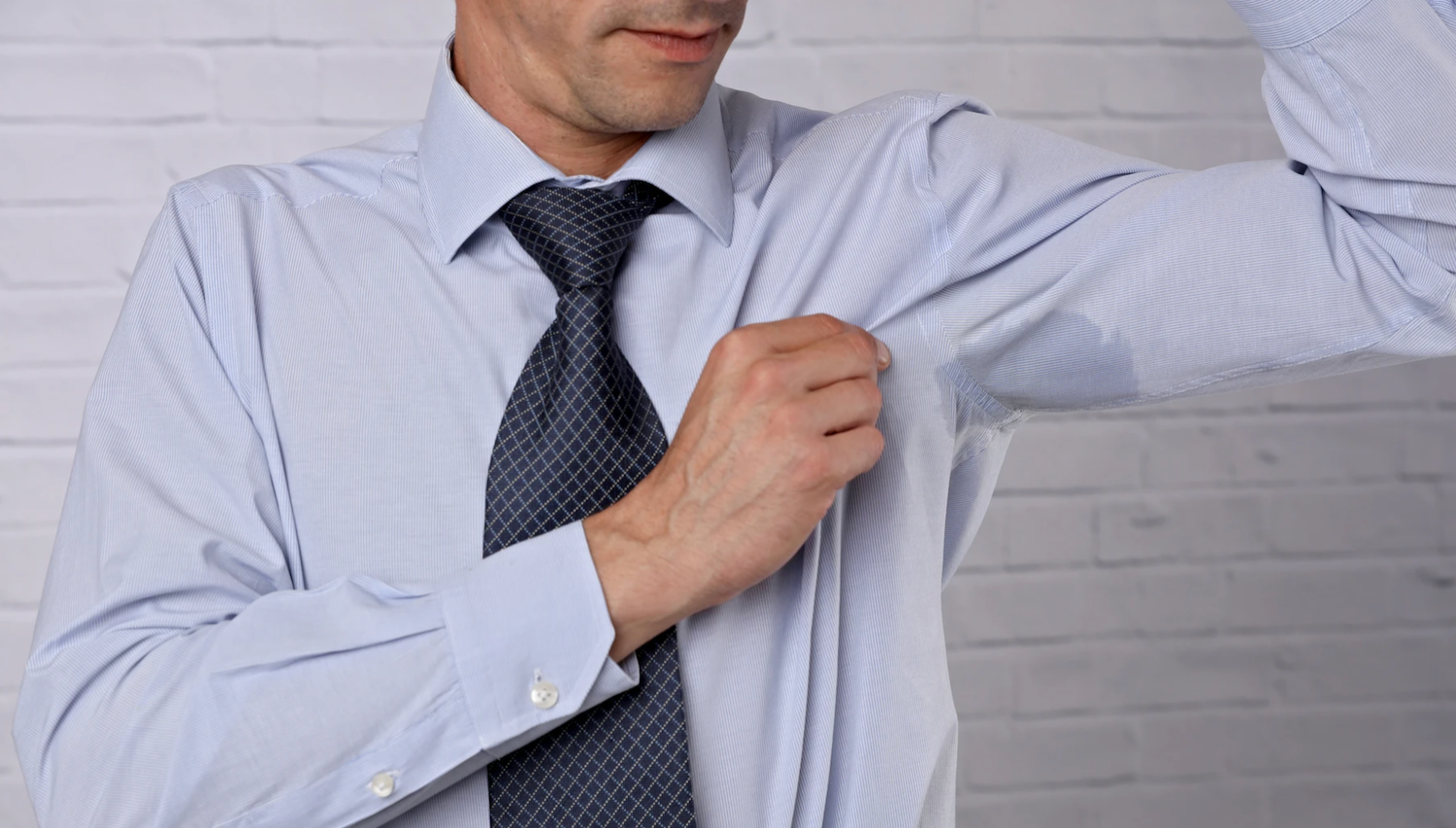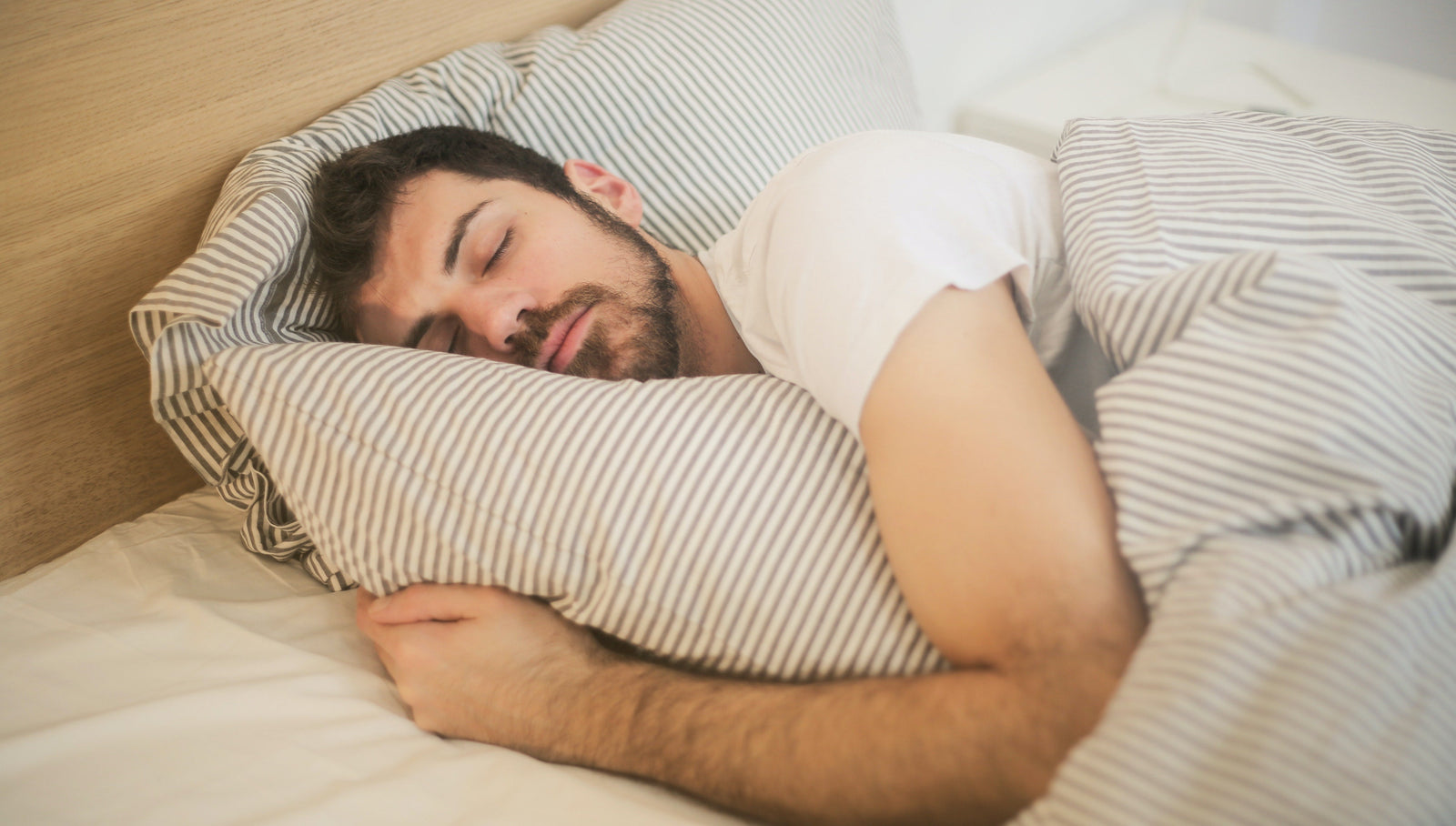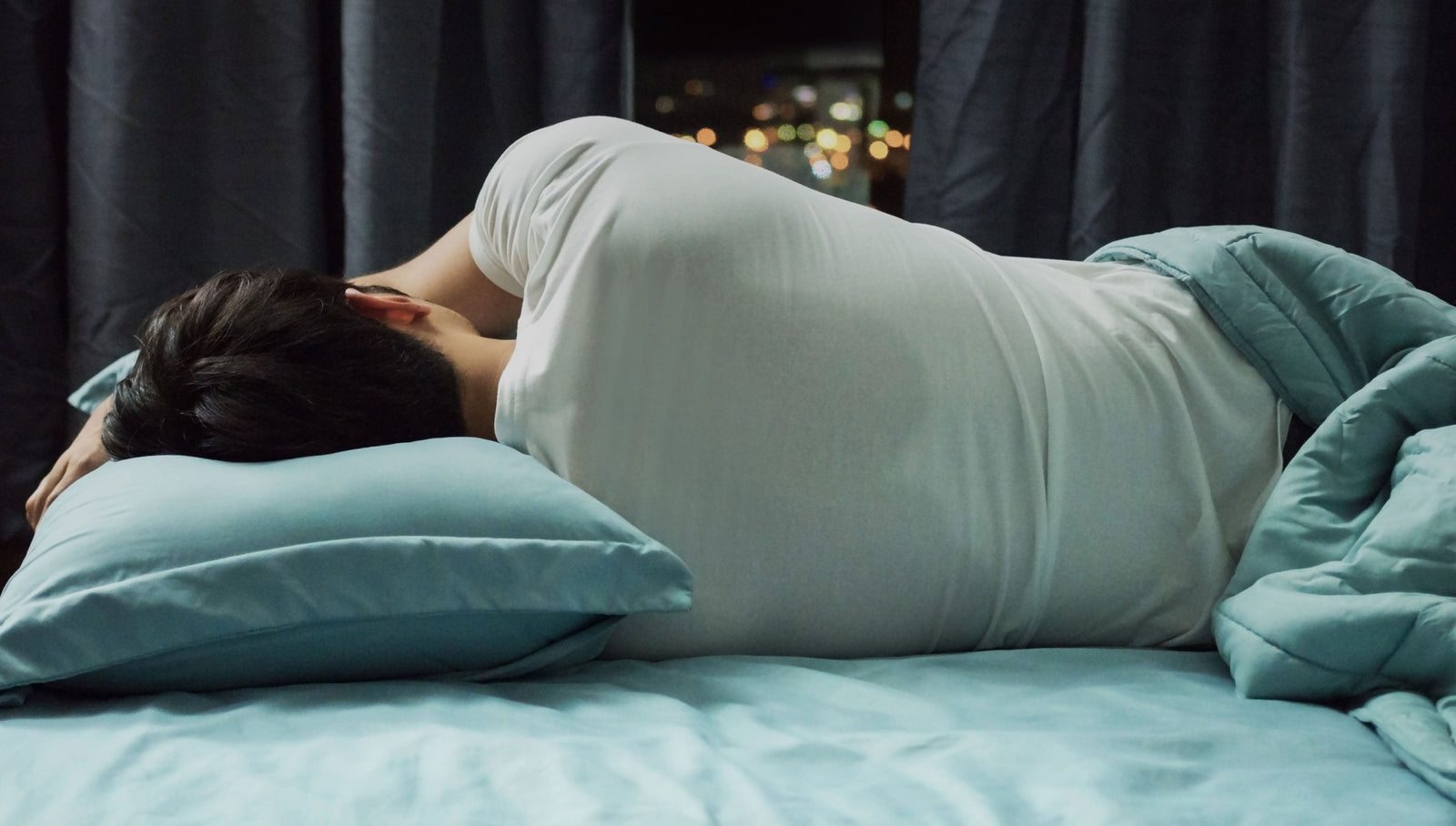Your Cart is Empty

Let us just put it out there - dealing with excessive armpit sweat is a real pain.
Axillary hyperhidrosis, or excessive underarm sweat, can take over your life if you are unsure how to stop armpit sweat. When it’s extreme, you may even find yourself changing the types of clothes you wear, avoiding interaction with people and even steering clear of some of your favorite activities.
If you are fed up with living a life full of restrictions and embarrassing sweat marks, keep reading to learn how to stop armpit sweat. We’ve compiled 9 ways to stop or prevent underarm sweat and improve the quality of your life.
Before we get into the cause of and treatments for axillary hyperhidrosis, let’s first examine hyperhidrosis in general. By definition, hyperhidrosis is a condition that causes the body to sweat excessively, even when there is nothing to trigger sweat. The disorder is chronic, causing constant sweating at inappropriate and inopportune times. It can be extremely embarrassing to those affected by it, altering romantic, social, and work lives.
There are two types of hyperhidrosis:
Areas most affected by hyperhidrosis include:
So the official definition is that axillary hyperhidrosis is a medical condition characterized by excessive underarm sweating.
While there are several natural causes for sweat, none of these apply to axillary hyperhidrosis. Research suggests that the condition may be hereditary, as many sufferers have a sibling or parent also experiencing symptoms of the disorder. But in all honesty, nobody knows for sure what causes axillary hyperhidrosis.
Not having an exact cause of primary hyperhidrosis means physicians must find ways to treat the symptoms, rather than the cause. This creates a need for long-term treatment strategies.
Since the discovery of axillary hyperhidrosis people have been wondering how to stop excessive underarm sweating. For many, the answer is medicated deodorant. But advancements in medical technology and research have made it possible to treat axillary hyperhidrosis in various ways.
Since the discovery of mortality, there have been home remedies to heal what ails you. The same can be said for excessive underarm sweating home remedies. Some of these treatments include:
Your diet can have a huge impact on how much you sweat, so it's important to adjust your diet if you're struggling with heavy armpit sweating.
The thermic effect of foods makes them a prime consideration if you need to figure out how to prevent armpit sweat. Avoid foods that make you sweat, such as those that are salty like beef jerky, salted nuts, or potato chips. These foods contain a lot of sodium that is released from your body as excess urine or sweat.
Processed foods like white bread, biscuits, and breakfast cereals are low in fiber and nutrients. This causes your body to work harder at digesting them, which increases sweat production.
Spicy foods, like hot wings or wasabi, can trigger the sweat glands in your body (as a natural reaction to try to lower your body temperature), making you sweat everywhere, including your armpits.

Just as there are foods that can trigger sweating, some foods can actually regulate your body temperature and reduce underarm sweat. In general, make sure you eat plenty of foods that are easy to digest and low in sodium. For example, oats are full of fiber and are easily digested without breaking a sweat, if you pardon the pun.
Look for vegetables and fruits dense in water and nutrients, like grapes, cauliflower, watermelons, and red cabbage. Drink plenty of water to stay hydrated. This prevents your body from overheating and feeling dehydrated, both of which makes you sweat more.
Many people start their days by brewing a hot cup of java and replenish their cups throughout the day. There is nothing wrong with an added boost of energy, but it comes with a cost. When you rev up your central nervous system with caffeine, your body functions at a higher temperature level, causing more sweat to be produced.
So if you want to know how to stop underarm sweating, avoiding (or reducing) your caffeine intake is good place to start.
Finding an effective antiperspirant is key. You may use an over-the-counter clinical strength antiperspirant or maybe you’ve upgraded to a product that is only available with a prescription. Either way, using an antiperspirant improperly may make the situation even worse.
To make sure you properly apply your antiperspirant, follow these simply tips:

While having hairy armpits does not cause sweaty armpit, it may contribute to sweat marks and stains. First of all, having hairy armpits may prevent your antiperspirant from making contact with the skin, making it less effective in stopping your sweat.
Additionally, having armpit hair causes moisture to linger in your armpits longer than it would if there was no hair, and it can make sweat stains worse. The added moisture may also mix with the bacteria on your skin, which causes odor. Shaving your armpits may help reduce the discomfort associated with excessive underarm sweat and effectiveness of your antiperspirants.
Just as changing your diet can impact how much you sweat, your lifestyle has an impact on your body's sweat response. These suggestions will help reduce heavy armpit sweating.
As a modern man, you are probably not a stranger to the effects of stress and anxiety. However, when your stress level increases, so does your body temperature, resulting in increased sweat. If you have been trying to figure out how to get rid of sweaty armpits, you may want to work on reducing your stress level.
We’re not suggesting you take off work to travel to Bali to rid yourself of stress. Simple adjustments to your daily schedule may help lower your stress:
If you smoke cigarettes, then you already know there are many health-related risks associated with smoking. But you may not know that smoking cigarettes also makes you sweat more, like when you drink too much caffeine. The nicotine in cigarettes causes your body’s temperature and heart rate to increase, which kicks your sweat glands into overtime to help cool you off and calm you down.
Just as caffeine and nicotine encourage sweat pores to open up, astringents have the opposite effect by causing the sweat pores to compress. As such, applying an astringent may be a super simple and effective sweaty underarms treatment.
Two ready-to-use and easily available astringents are apple cider vinegar and witch hazel. Simply saturate a cotton ball, and apply full-strength to your underarm skin. (Use with caution on freshly shaven armpits!) Another popular astringent is black tea or sage. Steep as usual, allow to cool and then apply to the armpits using a cotton ball.
It might seem counterintuitive, but regularly exercising may help to reduce and regulate your sweat outbreaks. Being physically active helps relieve and manage stress (as previously mentioned) so it naturally reduces your body’s natural reaction to stress sweat. It may also retrain your body, in a sense, to sweat more during heavy workouts and less frequently when your body is functioning at a normal pace.

One axillary hyperhidrosis treatment is prescription medication. Oral medicines reduce sweating by decreasing the stimulation of your sweat glands. Most prescriptions for underarm sweating include anticholinergics. These medicines block acetylcholine, a neurotransmitter, from sending chemical messages to trigger sweat.
Oral medicines reduce sweating by decreasing the stimulation of your sweat glands.
Another medication used for axillary hyperhidrosis is beta-blockers, which affect your central nervous system. These work best for those who feel they sweat most in situations that cause anxiety.
Finding the right medication for you requires the help of a physician, as each prescription for underarm sweating acts differently on the body.
Alternative methods for oral medication include laser therapy, injections, and medicated wipes. The most common of these are:
As with any medicated treatment, there are benefits and side effects to each. It’s a good idea to speak to your physician about available treatments and how they could affect you long term before selecting one.

Deodorant and antiperspirant have long been the top agent used in the fight against sweat and odors caused by sweat. For those with axillary hyperhidrosis, standard brand antiperspirants aren’t enough. Fortunately, there are prescription antiperspirants that use Aluminum Chloride Hexahydrate available for purchase. The combination of liquid from sweat and Aluminum Chloride Hexahydrate, creates a gel-like substance that blocks pores from emitting sweat.
How you use antiperspirant is just as important as which product you choose. It’s important to clean and dry the area thoroughly before use. The best time to apply medicated antiperspirant is before bed.
Believe it or not, the clothing you wear can also play a role in treating, or masking, excessive sweating. The commonality of this disorder has created an entire movement in the fashion industry for absorbent and breathable materials.
There are many different brands selling clothing that can assist in reducing the visibility of your sweat. Absorbent underclothes are a popular seller because they soak up sweat before it has a chance to reach your outer clothing.
There are also products that repel liquid and stains. These are a great way to manage ongoing sweat throughout the day and keep your clothing longer. At Ejis, we create sweat proof basics that act against hyperhidrosis in several ways. These include:
Living with excessive underarm sweat can be time-consuming and disruptive. But by taking a proactive approach to learn how to stop armpit sweat - and the appearance of sweat - you can regain your confidence and start living the life you deserve!
Until there is a cure for axillary hyperhidrosis, look for sweat protection and support from Ejis. Our experienced team is always looking for ways to improve our brand and create new and unique products to combat sweat. By offering comfortable and reliable products, you can take control of your life, sweat and all. (Buy on our shop or on Amazon)
This post was originally published in February 2020, and was updated in September 2020 and June 2021.



As winter's chill creeps in, you might think that sweating is only for the scorching summer days. But guess what? Sweat can still happen when it's cold outside. In this article, we'll dig into the science of why we sweat in the winter and give you some tips on how to deal with sweating in cold weather.